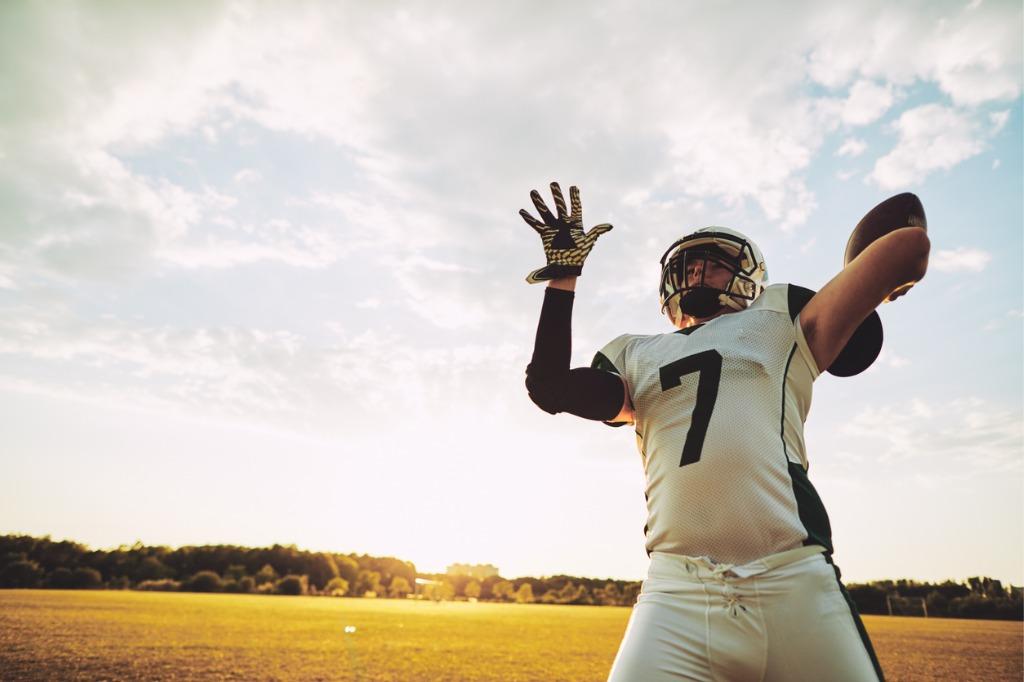Athletes in sports that involve repetitive throwing motions, such as baseball, football, and javelin, are prone to a unique set of throwing injuries. These injuries often stem from the high stresses placed on the arm and shoulder during the throwing action. Understanding these risks is the first step toward prevention. At Performance Sports Medicine Institute, we specialize in treating and preventing throwing injuries in athletes. If you are an athlete or coach, it’s important to familiarize yourself with these common throwing injuries to better protect yourself and your team.

Understanding Shoulder Overuse
The shoulder is subjected to intense stress in throwing sports. Over time, this may lead to overuse injuries such as rotator cuff tears and shoulder impingement. These injuries are particularly common in baseball pitchers due to the repeated and forceful motions of throwing a pitch. Other contributing factors to shoulder overuse injuries include poor throwing mechanics, inadequate warm-up or cool-down, and insufficient rest between games or training sessions.
Elbow Injuries
In addition to shoulder overuse, athletes who engage in repetitive throwing motions are also at risk for elbow injuries. These can include medial epicondylitis, also known as golfer’s elbow, and lateral epicondylitis, or tennis elbow. Both of these injuries result from inflammation of the tendons in the elbow due to repeated stress and strain. UCL (ulnar collateral ligament) injuries are also a concern for pitchers and other overhead-throwing athletes. This ligament, which connects the bones in the elbow and helps stabilize the joint during throwing, can become stretched or torn over time.
Effective Strategies for Injury Prevention
As an athlete, gaining knowledge about throwing injuries is only half the battle — the other half lies in understanding and implementing effective measures to prevent these injuries. Injury prevention strategies are crucial for ensuring longevity in the sport and safeguarding athletes’ physical health.
Perfecting Throwing Mechanics
One of the most essential strategies for preventing throwing injuries is to perfect throwing mechanics. This involves paying close attention to body alignment, timing, and movement patterns during a throw. Athletes should work with coaches and trainers to identify flaws or imbalances in their technique and focus on correcting them through targeted drills and exercises. Having proper mechanics not only reduces stress on the arm and shoulder but also improves accuracy and overall performance.
Strength Training and Conditioning
Strength training and conditioning are crucial for athletes, particularly those involved in throwing sports. A strong and well-conditioned body is better equipped to handle the demands of repetitive throwing motions, reducing the risk of injury. Exercises that strengthen the shoulder, arm, core, and leg muscles can contribute to a more balanced and resilient body. It’s imperative to work with a trainer or physical therapist to develop an appropriate strength and conditioning program that considers the athlete’s specific needs.
Flexibility and Mobility Work
In addition to strength training, flexibility and mobility work are also vital for preventing throwing injuries. A proper range of motion in the shoulder, arm, and trunk is essential for proper mechanics and allows for a smoother throwing motion with less strain on the body. Athletes should incorporate dynamic stretching and foam rolling into their warm-up routines to prepare the muscles for activity. Additionally, regular deep tissue massage or myofascial release can help improve tissue health and flexibility. As you work on your flexibility and mobility, remember to listen to your body and avoid pushing past your limits.
Adequate Rest and Recovery
As with any physical activity, rest and recovery are crucial for preventing injuries in throwing sports. Athletes should aim to have at least one day of rest per week and proper rest between games or training sessions. This gives the body time to repair and recover from the stresses of throwing. It’s also crucial for athletes to listen to their bodies and take breaks when needed. Pushing through fatigue or pain may lead to overuse injuries and long-term damage. Moreover, staying hydrated and cooling down properly after activity can also aid in the recovery process.
Navigating Treatment and Recovery
Despite taking preventative measures, throwing injuries may still occur. It’s essential for athletes to seek proper treatment and follow a structured recovery plan in order to return to their sport safely. Treatment may involve physical therapy, sports medicine, rest, and, in some cases, surgery. Immediate care and assessment of an injury can greatly impact recovery time and reduce the risk of further complications. Athletes should also work closely with their healthcare team to develop a rehabilitation plan and gradually ease back into throwing activities. Returning to full activity too soon may result in re-injury and prolonged recovery time.
Recover from Throwing Injuries
Don’t let throwing injuries sideline your athletic pursuits. At Performance Sports Medicine Institute, we’re committed to helping you stay at the top of your game. Our team uses evidence-based techniques to treat and help you prevent throwing injuries, keeping you healthy, strong, and ready to compete. Schedule an appointment with us today, and let’s work together to keep you in the game.

